Art interrupted
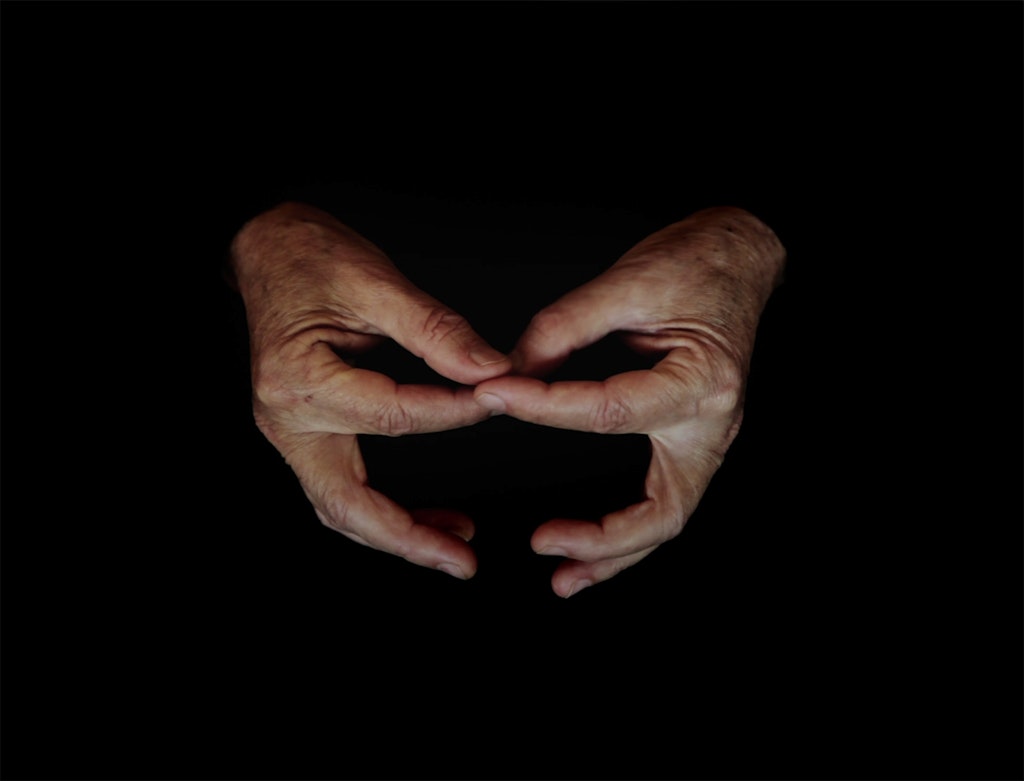
Hossein Valamanesh Passing time 2011, Museum of Contemporary Art. Image courtesy Museum of Contemporary Art Australia and the artist © the artist
What does art want? Art wants to be looked at! But alas, due to COVID-19 cancellations and closures, many exhibitions now hang in empty galleries and museums, having been seen by only a few gallery-goers – and sometimes not seen at all. Art Gallery of NSW director Michael Brand explored these ‘ghost exhibitions’ in an earlier blog post. In this post – the first in a series – staff from across the Gallery shine a light on shows that have been left in the dark.
Chadi Sankary, visitor experience supervisor
Hossein Valamanesh has a hold on me like few other artists do.
In 2016, I reflected on the notion of ‘artistic pilgrimage’ when, on a trip to Europe, I landed in Konya, Turkey, to visit the resting place of the mystic poet Rumi, who had been a driving force in my artistic practice for years. Back home, I searched various galleries’ collections for any references to his poetry and found Valamanesh’s The lover circles his own heart 1993. My desire to see it, and to experience his body of work, was as pressing as the sentiment in his statement: ‘being an artist you are like a lover – a bit crazy, circling your own heart, with the desire and madness possessing your being’.
In January 2020, I realised that Passing time, a video work I hadn’t seen which was created with his filmmaker son, would be on display in the Museum of Contemporary Art Australia’s collection exhibition Today Tomorrow Yesterday until July. I let life get in the way and and didn’t make it to see it, so now I’m reflecting on a new notion: When art calls loudly, answer quickly!
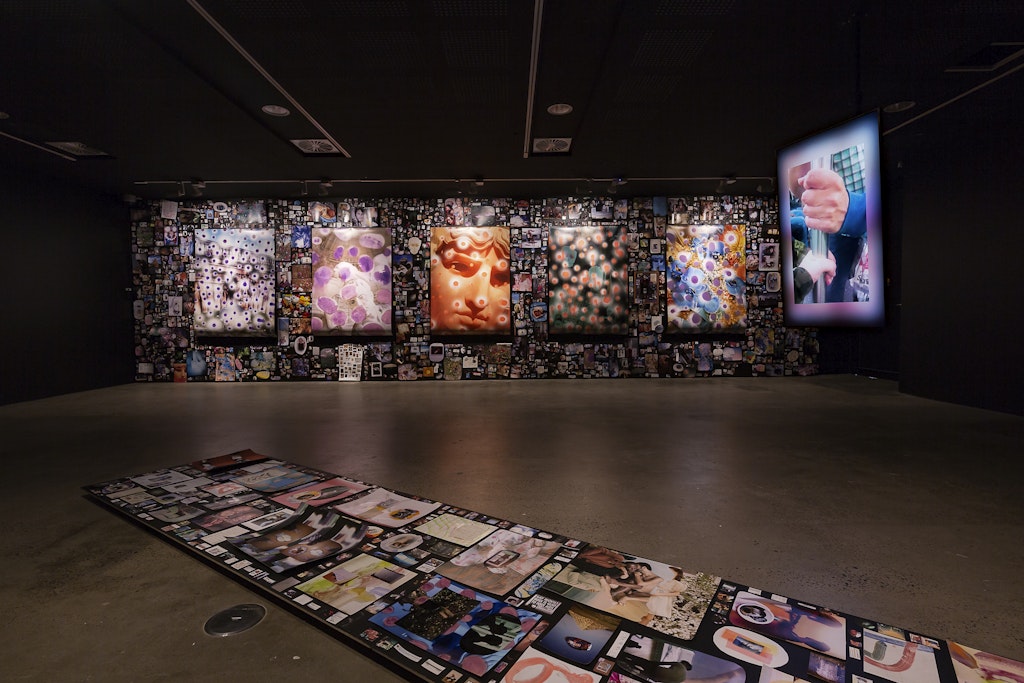
Samuel Hodge The wit of the staircase 2020, installation view, UNSW Galleries, 2020. Photo: Document Photography
Julia Bavyka, installation technician
I have been following Samuel Hodge’s practice for a while, and have watched his new body of work unfold online. His exhibition The wit of the staircase – which was open for one day in March at UNSW Galleries, Paddington, before closing – delves into Samuel’s own archive and offers a critical perspective on issues of LGBTQ+ representation. As a photographer, Samuel’s intensely personal visual language draws from fashion, the simultaneity of internet culture, and the possibilities of gay and queer lives. It is a deep shame that his largest exhibition to date could not be seen by more people in person. It’s no substitute, but on the UNSW website you can take a virtual tour of the show and read a catalogue text by the Art Gallery of NSW’s senior curator of contemporary art, Isobel Parker Philip.
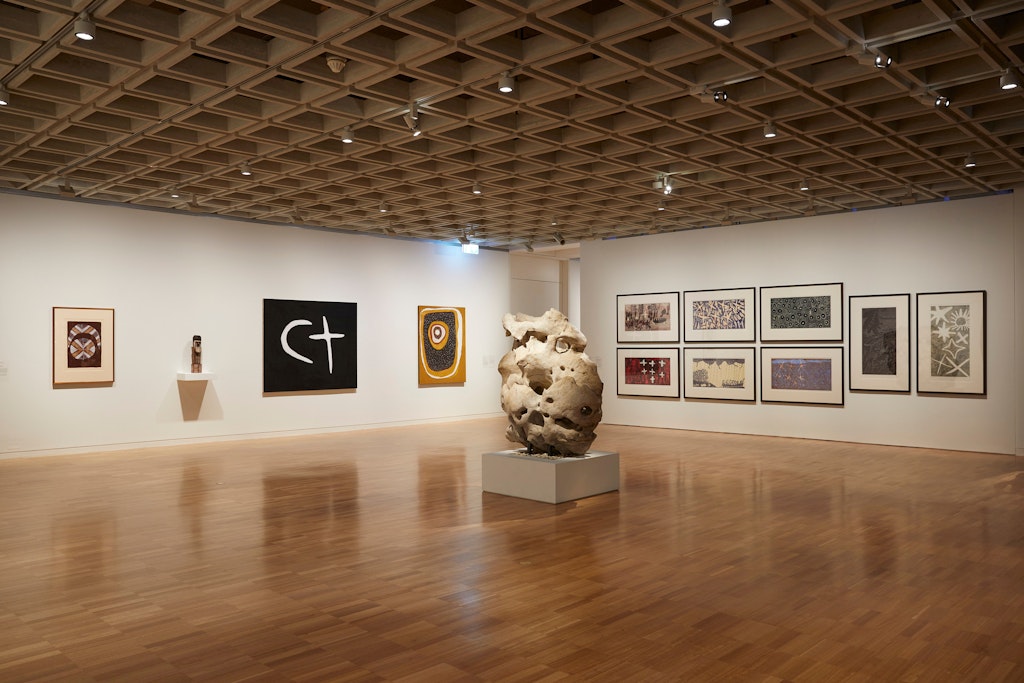
Under the Stars, installation view, Art Gallery of New South Wales
Amanda Peacock, senior programs producer, Aboriginal and Torres Strait Islander art
I worked on and thought about the exhibition Under the Stars for many months before it opened at the Art Gallery of NSW, but I’ve never seen it. I caught glimpses of the installation but was preoccupied that week with extracting my two children from their European lives as COVID-19 crashed upon them. Under the stars marks another historical event with far-reaching and often devastating consequences – Captain Cook’s landing at Kamay (Botany Bay) in 1770 – but reminds us of the multiple and sophisticated systems of knowledge and wayfinding with which his voyages intersected, and which are written into the night skies that connect us all.
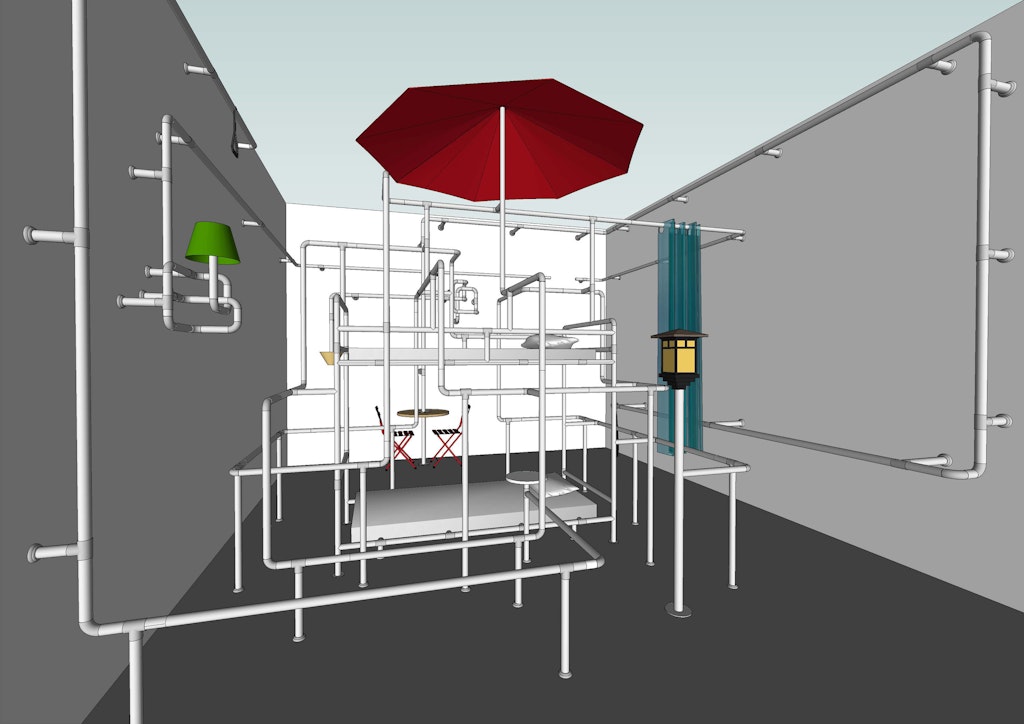
Yona Lee, proposal view of booth, presented by Fine Arts Sydney, for Hong Kong Basel 2020. Courtesy the artist and Fine Arts, Sydney
Justin Paton, head curator of international art
Every exhibition matters to an artist but early exhibitions matter especially. And so do exhibitions that take an artist’s work to new eyes in a new place. So, when word finally came through in February that Hong Kong Basel art fair had been cancelled (the art world’s first big sign, it seems in retrospect, that business-as-usual was over), I felt especially for one deft young sculptor whose work would not now be travelling. This was Yona Lee, who you may remember from her recent show at the Art Gallery of NSW, and whose twisty steel sculptures, absurd and yet purposeful, are meditations on cities and sociability. Yona’s project for Hong Kong, presented by Fine Arts Sydney, looks like it would have been a treat: one of those go-for-broke stands that you arrive in with gratitude amidst the more predictable cash-and-carry offerings. And like so many artworks right now, it is strangely charged in retrospect by our COVID-19 hyperawareness. A kind of living room where beds and tables are entangled in protective barriers, Yona’s yet-to-be project now looks like an object lesson in how to be together while staying apart.
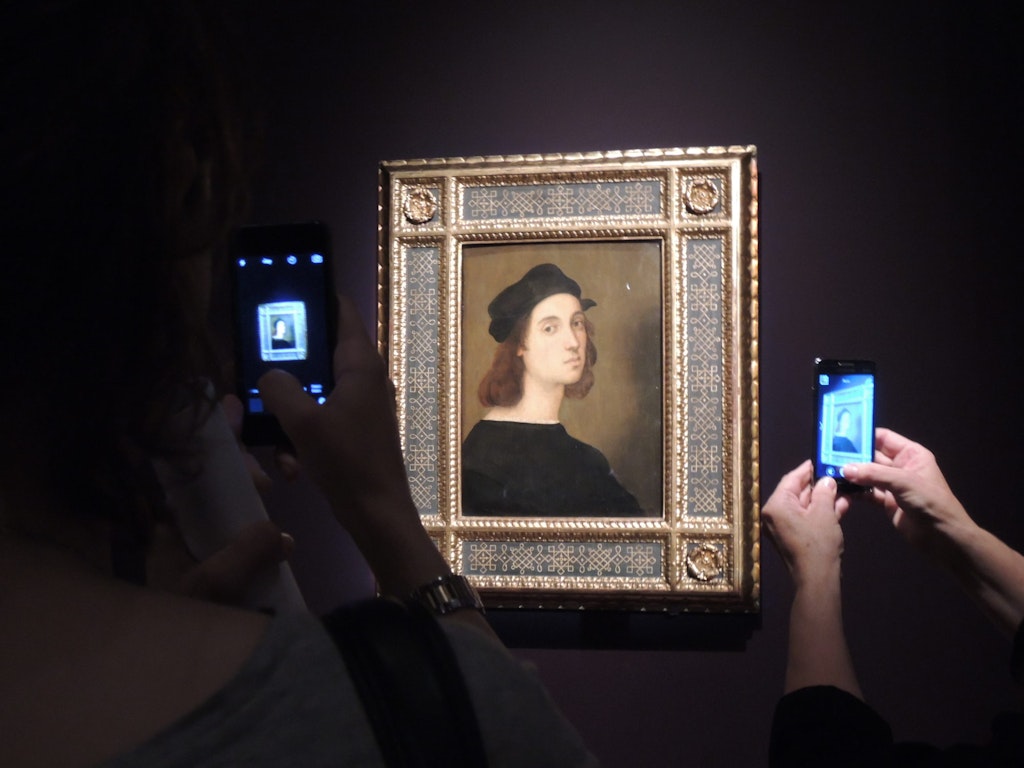
Raphael Self-portrait 1506-08 from the Uffizi Gallery, Palatine Gallery collection, on display in the Pushkin Museum, Moscow, 2016. Photo: Wikipedia/Shakko, licensed under a Creative Commons Attribution 4.0 International license
Josephine Touma, manager, public programs
The few times I’ve been lucky enough to see a Raphael painting in the flesh, I’ve been genuinely astonished. I admire Michaelangelo’s muscularity and Leonardo’s intellectualism, but Raphael’s grace and tenderness never fail to move me. So, when I discovered that my European holiday coincided with the (truly) once-in-a-lifetime Raphael exhibition Raffaello 1520–1483, I immediately altered my itinerary to ensure I could catch it at the Scuderie del Quirinale in Rome. Sadly, of course, both holiday and exhibition were halted (although a ‘walk in the exhibition’ is still available online). Raffaello 1520–1483 closed only four days after it opened, its brevity a poignant reminder of the artist’s sudden death – 500 years and one week ago – at the age of 37. With appropriate tenderness, Romans laid flowers at his tomb on 6 April, along with a child’s drawing of a rainbow – a sign of hope seen in many Italian windows during this crisis.
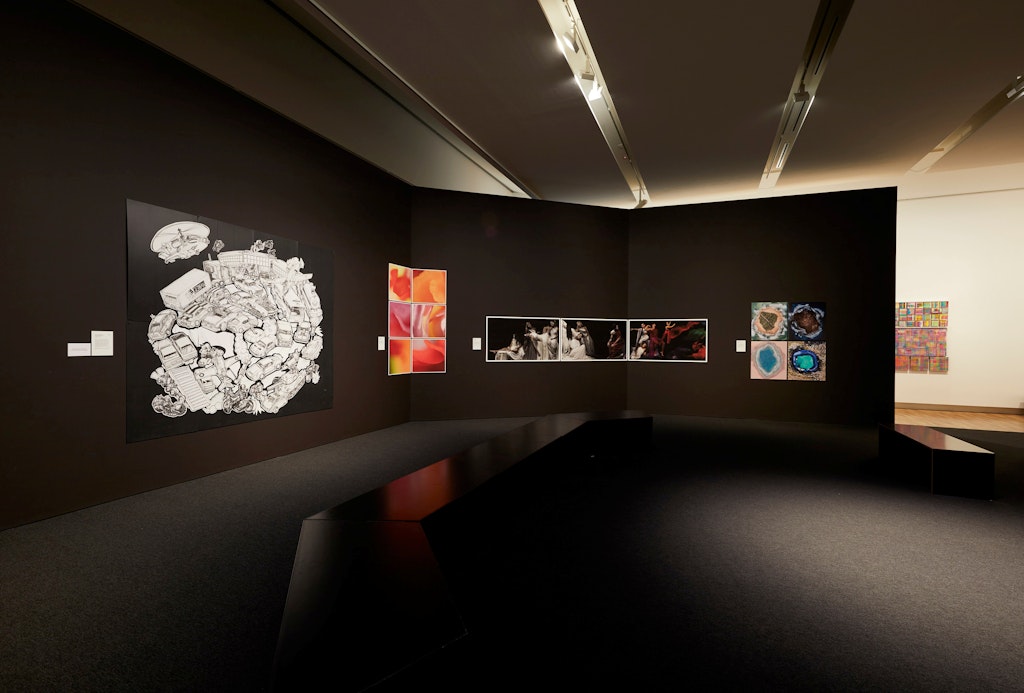
ARTEXPRESS 2020, installation view, Art Gallery of New South Wales
Leeanne Carr, manager, education
From the mouths of babes. Noisy, bustling, sounds of excitement and surprise. This time of year is ARTEXPRESS time at the Art Gallery of NSW. All the selected student works are made available online but the silence in this exhibition today is a haunting reminder of how much we love the energy of young people at the Gallery – and how much we crave having them back. ARTEXPRESS is a celebration of student artmaking, chosen from outstanding HSC artworks created across New South Wales. I am intrigued by the students’ honest, sometimes brutal, opinions about the world. When trying to find meaning in our current lives, I am comforted by these voices of the future. Not because they have the answers, but because they are brave enough to question what is around them.
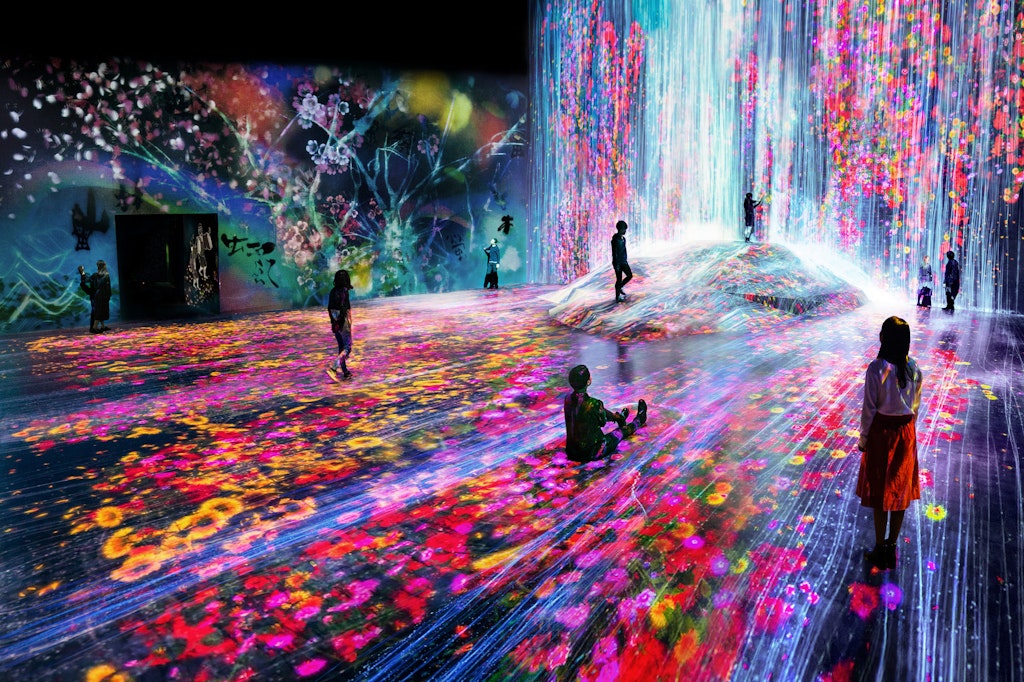
teamLab Borderless 2018, installation view, Mori Building Digital Art Museum, Odaiba, Tokyo © teamLab. teamLab is represented by Pace Gallery
Asti Sherring, time-based art conservator
I am missing the feeling of wandering with others through public space – a freedom that is so essential to the creative brain. I also miss the experience of art and have more than once caught myself thinking that the closed art museums of the world must be terribly lonely without us. This sadness is exemplified when I think of the technological artworks contained in teamLab Borderless in Tokyo, whose very existence relies on the presence and flow of an electric charge and the human body to activate the work. As an art museum ‘without boundaries’, which engages viewers in immaterial yet immersive sensory experiences, teamLab Borderless lives only in the present and, without our participation, ceases to exist. Yet, while our capacity to engage with such marvels may for some time be hindered, I personally feel comforted by my conviction that teamLab Borderless is only sleeping and waiting to be woken, by us.
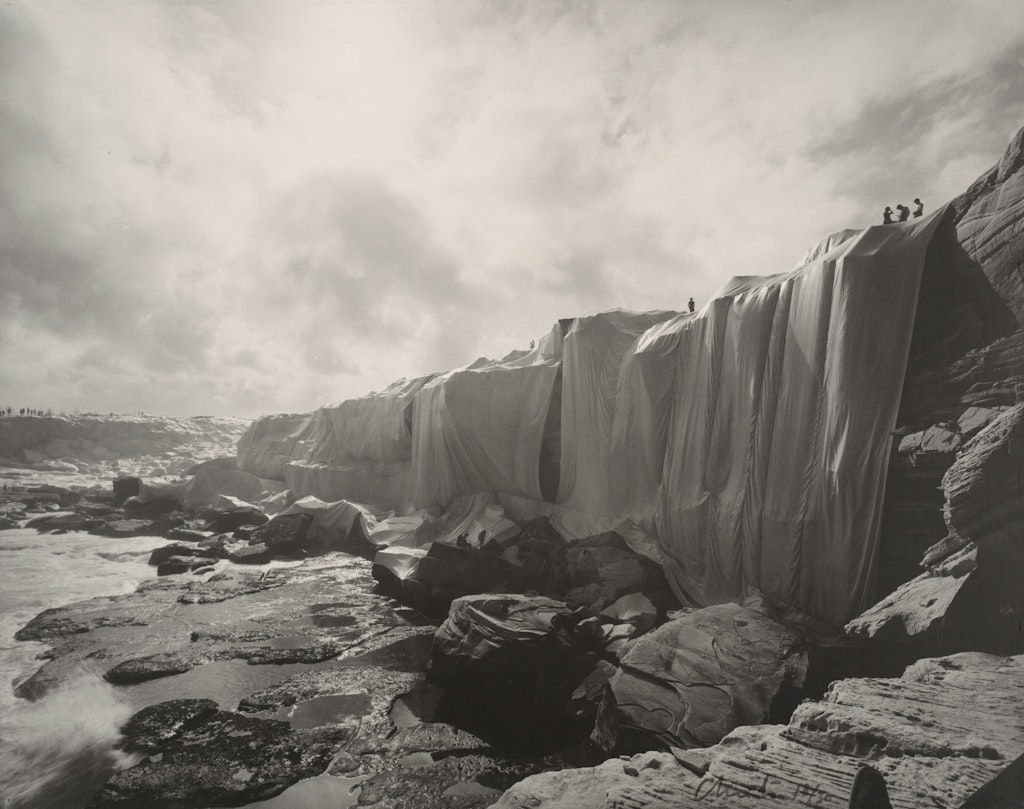
Christo, Jeanne-Claude Wrapped Coast, One Million Square Feet, Little Bay, Sydney, Australia 1969, Art Gallery of New South Wales © Christo 1969. Photo: Harry Shunk
Analiese Cairis, senior graphic designer
I specialise in arriving places the week before an exhibition opens or the day after it closes, so I remember the excitement of reading about Christo’s new project, wrapping the Arc de Triomphe, planned for the European spring. We had a long trip planned – Paris in spring! Finally, perfect timing.
Having worked with John Kaldor on Kaldor Public Art Projects books and exhibitions for many years, I know Christo’s work intimately. I had been too young to experience the wrapping of Sydney’s Little Bay in 1969, too poor to travel to Japan for The umbrellas, and too wrapped up (no pun intended) in family dramas to travel to Italy for the beautiful Floating piers in 2016. Sadly, 2020 too would not be our year.
The link to the exhibition on the Centre Pompidou website now stops me abruptly at ‘Unavailable page’. I take it that the accompanying ‘Error 404’ translates to ‘due to the worldwide shutdown this exhibition is now cancelled/postponed’. However, a visit to Christo’s website tells me the ‘Wrapped’ part of the project has been rescheduled for September. Given travel restrictions, I’ll most likely be viewing the result from my lounge. And maybe next spring I’ll get to see the Arc de Triomphe again, but unwrapped.
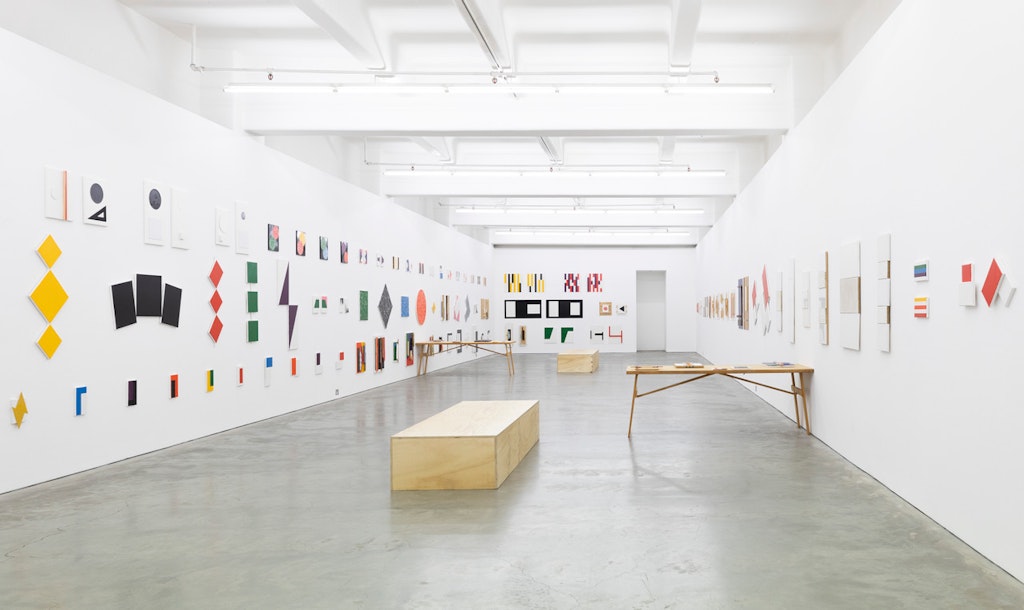
John Nixon Groups + pairs 2016-2020, installation view, Anna Schwartz Gallery Melbourne, 2020. Courtesy Anna Schwartz Gallery. Photo: Amalia Lindo
Nicholas Chambers, senior curator, modern and contemporary international art
I was deeply disappointed when I had to cancel a trip to Melbourne to see John Nixon’s show, Groups + pairs, 2016–2020, at Anna Schwartz Gallery. The spirit of experimentation that has always underpinned John’s art has been in overdrive in recent years, and this show surveys more than 100 works organised into different types. There is a universe of possibilities in each small grouping or pair. Some are restrained explorations of form, others exuberant and jaunty. The exhibition also includes two collaborations: textile works made with Jacqueline Stojanovic; and a video piece featuring dancer Grace Uchida, Alpha60 dresses and shaped monochrome paintings by Nixon. You can view the video, along with photographic documentation of the paintings, online. A poor substitute but a pleasure nonetheless. Bravo John!
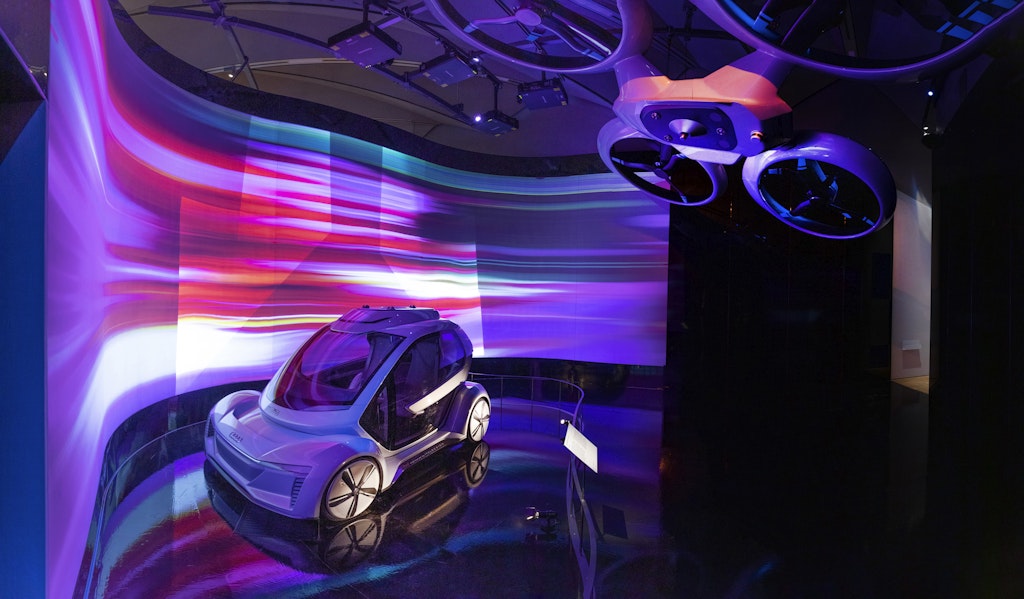
Cars: Accelerating the Modern World, installation view, V&A. Photo © Victoria and Albert Museum, London
John Saxby, editor, Look magazine, Art Gallery Society of NSW
One measure of a successful exhibition is its ability to make compelling a subject about which you might otherwise have had very little curiosity. Cars: Accelerating the Modern World, at London’s Victoria and Albert Museum, appears to do just that. I couldn’t be less interested in cars, having long hoped that by now they would have looked, and flown, more like those in The Jetsons. This exhibition’s emphasis on design, technology and ‘how the automobile was used as a way to dream up utopian futures’ gives it a cultural relevance beyond rev-heads. What’s more, curator Brendan Cormier’s 176-post Twitter thread about the show is almost as good as being there (under the circumstances).
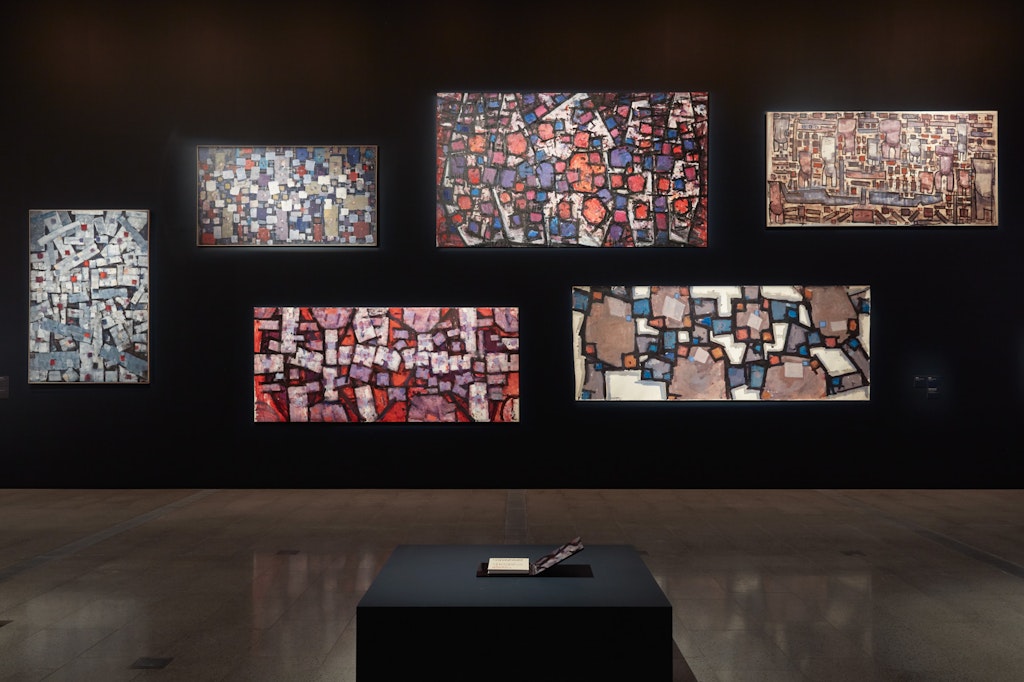
Roger Kemp: Visionary Modernist, installation view, The Ian Potter Centre: NGV Australia © Kemp estate. Photo: Tom Ross
Anne Ryan, curator, Australian art
One I missed, and one I gained. COVID-19 stymied a planned trip to see an exhibition, but opened up an opportunity to ‘see’ a show I otherwise would not have been able to visit.
The former was Roger Kemp: Visionary Modernist at the National Gallery of Victoria, which I had planned to catch on its last day on a work trip that was cancelled. I am a great admirer of Kemp’s scratchy, metaphysical abstraction. He was an artist who marched to his own tune, obsessive and voracious in his pursuit of art, and I know I would have seen some incredible works beyond those I know from our own collection. That was disappointing.
The latter was Léon Spilliaert at the Royal Academy, London. Since my first visit to Denmark a couple of years ago, I have been fascinated by the art of Scandinavia and its close neighbours. Spilliaert (1881-1946) was a Belgian painter whose work has affinities with that of two artists I greatly admire, Edvard Munch and Vilhelm Hammershøi. His dark, moody landscapes and portraits have a psychological intensity that speaks to the momentous times in which he lived. The pandemic led the RA to post a video walk-through. The opportunity to be there (almost) with these artworks, from a screen in Sydney, was wonderful.
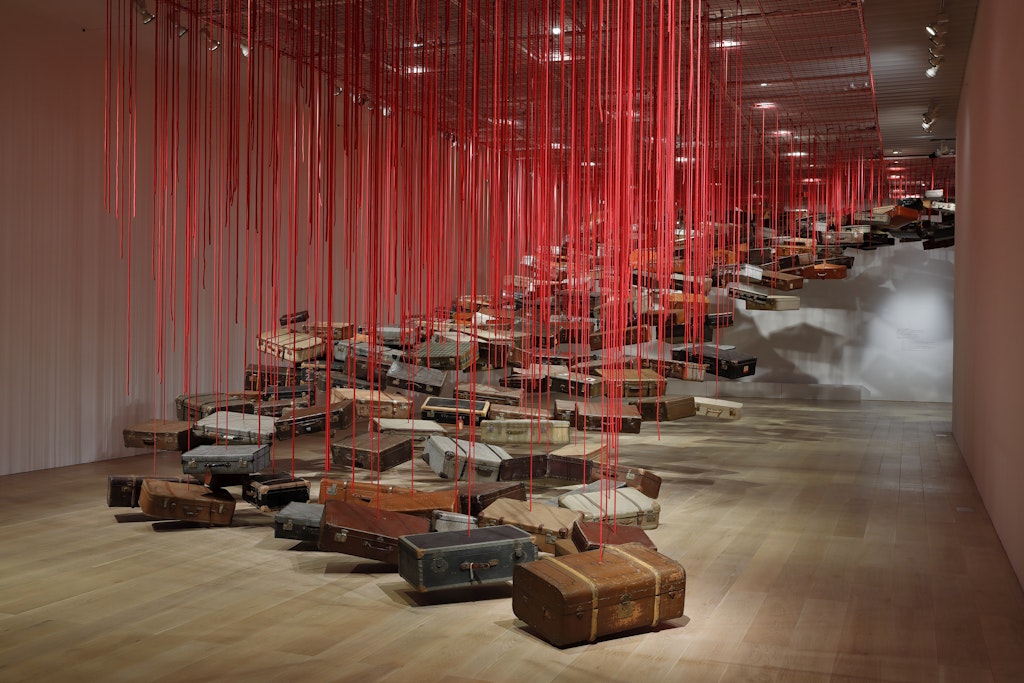
Shiota Chiharu: The Soul Trembles, installation view, Mori Art Museum, 2019. Photo: Mami Kataoka. Photo courtesy: Mori Art Museum, Tokyo. Artwork courtesy: Galerie Templon, Paris/Brussels
Holly Bennett, creative and content coordinator, marketing
Since I wasn’t lucky enough to see the exhibition at Mori Art Museum in Tokyo, where it showed in 2019, I would love to have seen Chiharu Shiota: The Soul Trembles at QAGOMA later this year. I was looking forward to wandering through Shiota’s large-scale installations, with their objects suspended in thickets of thread. Now that the show has been cancelled, I’ll have to imagine feeling the hum of tension in the room, the power of these intricate webs and their thousands of connections. Shiota’s layered lines remind me of delicate veins, flight paths or contact trace maps – but also of communication, the individual adventures of memory, and our shared strength. This exhibition will remain, for me, a phantom of potential.